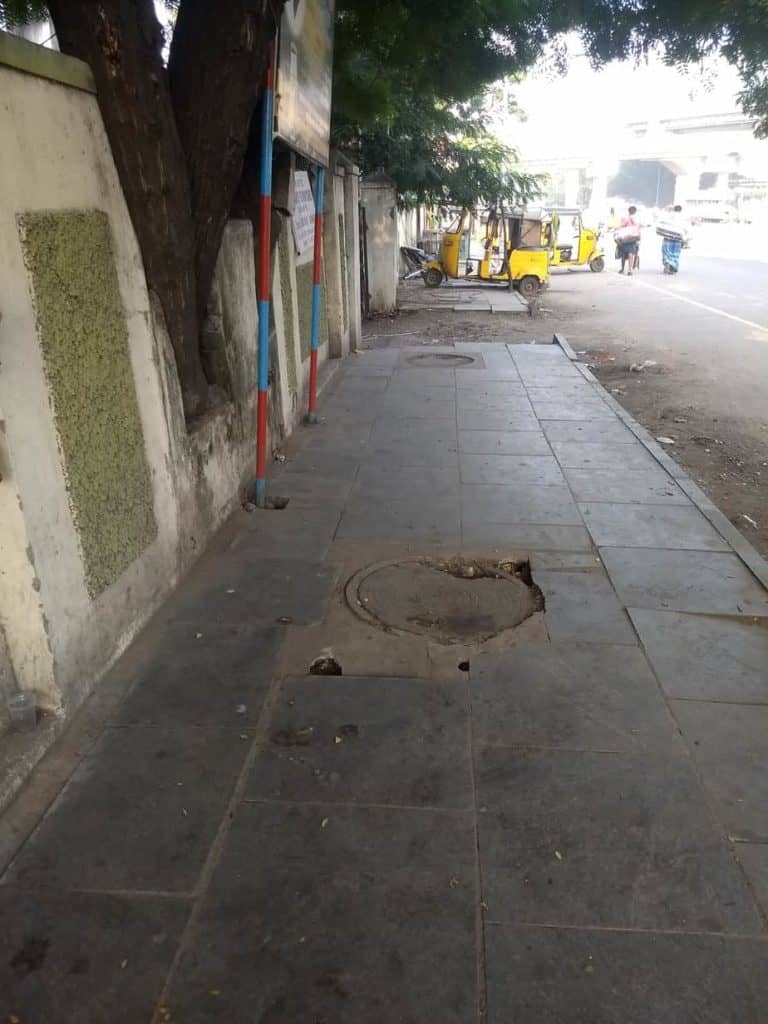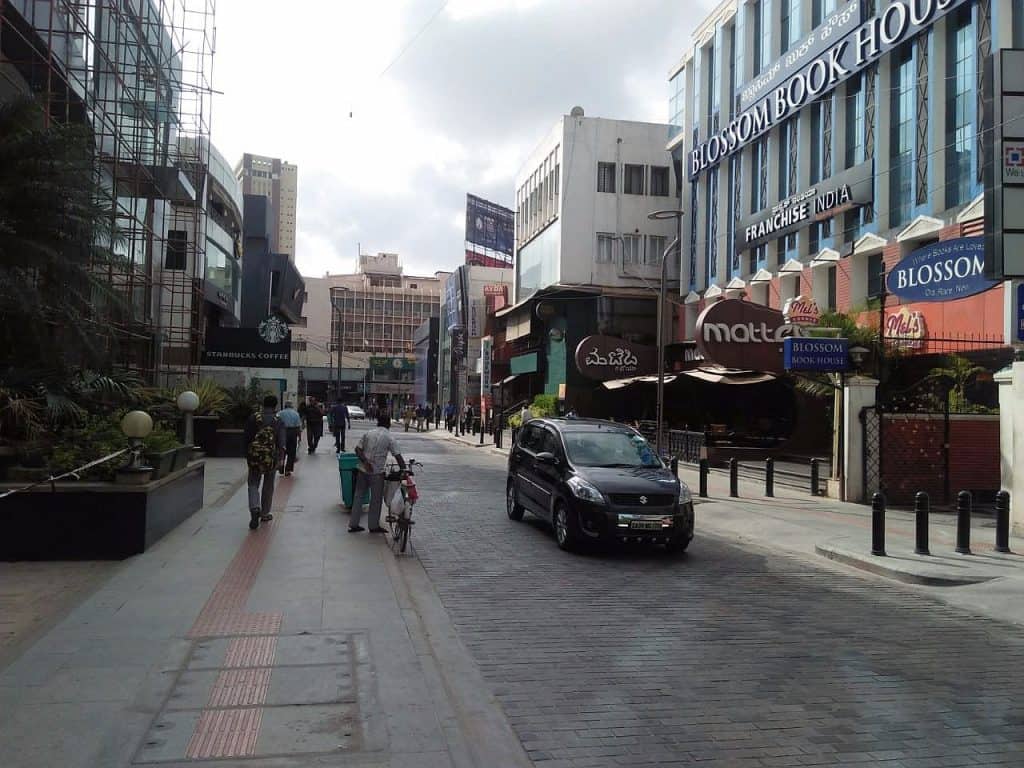Driving to my neighbourhood in the periphery of Bengaluru is like maneuvering a lunar module on the moonscape. Walking or biking is almost impossible. Every year, the gram panchayat ‘repairs’ the roads, thanks to years of advocacy from residents. And every monsoon, the road washes away.
To my solution-oriented mind, the answer is really simple: study the problem – the history of the road and area; socio-cultural conditions of the neighbourhood, villages, and industries on the road; the number of cars/ buses/ people using the road; environment and climate-related aspects such as soil, drainage patterns, etc. Then, it is about developing a solution: design the road, identify environmentally-friendly construction technology, develop specifications, identify contractors, identify funding and execute the job.
The shoddy work that happens on my road every year is the story everywhere in the city. During every Indian monsoon, public infrastructure such as roads, drains, and dams usually get washed away. We grumble, complain, protest, and die! Potholes caused the deaths of almost 10 Indians every day in 2017, but little seems to change.
I doubt that any of the officers of the city corporation or gram panchayat will read my piece. But hopefully, it will educate the readers enough to demand better solutions to their road problems.

Classification and jurisdiction of roads
In India, roads are classified according to the 1943 Nagpur Plan into four categories: National Highways, State Highways, District Roads, and Village Roads. Expressways were later added as an additional category.
National Highways connect major ports, state capitals, industrial and tourist centers. State Highways are the arterial roads of a state and are linked to National Highways and District Roads. Major District Roads (MDRs) connect areas of production, main markets, and state and national highways. Village Roads connect villages and the nearest district roads.
The Indian Roads Congress, a semi-official body of road engineers established in 1934, decides the minimum requirements for roads based on geography, speed, volume of traffic, and safety. The National Highways Authority Act, 1988, created the National Highway Authority of India (NHAI) to look after National Highways.
If a National Highway or State Highway passes through a city, it technically falls under the NHAI/ State Highways respectively. However, a gazette notification can transfer management to the municipality (BBMP in the case of Bengaluru).
In India, state roads are maintained by the public works department of state/union territory whereas city roads come under the municipal corporations and municipalities. Rural roads fall under Panchayats. The Zilla Parishads have the authority and responsibility to build district roads. All these various categories of roads make up the second largest network of roads in the world.
Read more: Explainer: How are roads in Chennai laid?
Urban and Street Design
Old cities in India were walkable cities. However, with the increase in population, western models of development that are automobile-oriented were adopted (e.g. Chandigarh). Design interventions by city authorities are aimed at providing ease to car users.
Pedestrians and cyclists are forced to use poor quality subways and footbridges although the average non-motorised transport (NMT) share in Indian cities is 30% – 40% of the traffic. India accounts for about 2% of motor vehicles globally, yet it’s responsible for more than 11% of road traffic deaths.

In the last 20-25 years, there has been concerted advocacy at the national and city levels to engage in better and more equitable models of road use. There have been Comprehensive Mobility Plans, Metro Report, Bus Rapid Transport Systems (BRTS), policies for street vendors, etc. There have also been campaigns for the improvement of streets. People are tired of poorly designed and constructed pavements, open drains, dangerous road intersections etc.
Significant examples of urban design at the city level include street redesign by nonprofits like Environmental Planning Collaborative for the Ahmedabad Municipal Corporation (2003), Street Design Guidelines by Unified Traffic and Transportation Infrastructure Centre (UTTIPEC) set up by the Delhi Development Authority (2011), Traffic Safety Plans through Urban and Street design by the World Resources Institute (2014), Urban Street Design Guidelines, Pune by Institute for Transportation and Development Policy (ITDP) for the Pune Municipal Corporation (2016) and the Bangalore Tender S.U.R.E Project by Jana Urban Space (ongoing since 2011).
Currently, many municipal commissioners are engaged in developing master plans in conjunction with road safety measures.
Read more: Potholes, poor lighting and flawed speed bumps: The nightmare on Pune roads
Construction, maintenance and quality of roads
The construction and maintenance of roads in the city fall under the municipal corporation. This area has always been problematic. The lack of engagement with the community, poor selection of contractors, bad quality construction, etc. are all issues.
Graft is a big issue. The politician-bureaucrat-contractor equation is the base for most of the shoddy public work in India. In 2011, a report suggested that over two-thirds of the funds for rural roads had been lost in the State of Uttar Pradesh to politicians.
In Bengaluru, since 2011 the Tender S.U.R.E project under which approximately 50 kms of roads were designed and built, has made a difference. The project institutes a set of street design guidelines, technical guidelines for the width of carriageways, footpaths, underground utilities, last-mile connectivity, street lighting, intersection design, landscape, and public spaces.
The guidelines also provide a model framework tender contract agreement or a Typical Contract Agreement (TCA) that defines planning and design specifications for contractors. The contract also specifies empanelment of contractors based on technical capability, improves the quality of the delivery system, quality of execution, procurement of materials, operation and maintenance requirements, communication, environmental and participatory requirements. This is a quality tender/contract.
This model sets in place quality check guidelines for operation and maintenance. It is now being adopted by other Indian cities like Nagpur, Davangere, and Hubli-Dharwad. Pune, Ahmedabad, and Chennai have their own models in place.
Of course, there are problems with the Tender S.U.R.E model – how the project was initiated, inadequate public participation, and the fact that the BBMP does not have true ownership of the project (it is based on the PPP model). Many of these issues are structural and need to be resolved.

Road not taken
Street redesign projects need to be owned by the city and there needs to be more public consultation at the street/ neighbourhood level. Once quality tenders are used and the quality of the work becomes more noticeable — the street isn’t dug up every year and there are no flooding/drainage problems — it is likely that more people will demand this model.
The politician-contractor-bureaucrat nexus will have to go. A more transparent, technical model will become the standard for our cities.
We are still at a very early stage in this process. Currently only 50-100 km of Bengaluru’s approximately 13,000 kms of road fall under this model. In order to facilitate better neighbourhood roads, citizens need to persuade the local corporator/ ward committee members to facilitate quality tender -based roads projects.
Just protesting potholes is not enough. Once better standards for design and development are adopted, contractors and BBMP will necessarily have to step up their game. This is the only way to improve the quality of roads.
Also read:
- 5,000 trees to go for widening roads around Bengaluru, says Forest Dept. But is that all?
- Rs 15 crore spent on potholes over two years, yet Mumbai roads continue to be death traps
- 44% of those who died on Bengaluru’s roads in 2017 were pedestrians
- Creating ‘incentives’ for good roads in the city
- Bengaluru’s potholes cost lives and money, but here’s how you can hold BBMP accountable
Hello – a small clarification. The first set of Tender SURE roads is wholly owned by BBMP. The next set, which are currently under construction are under the smart cities initiative. Vittal Mallya Road alone, a pilot to the Tender SURE model was executed through a PPP model.